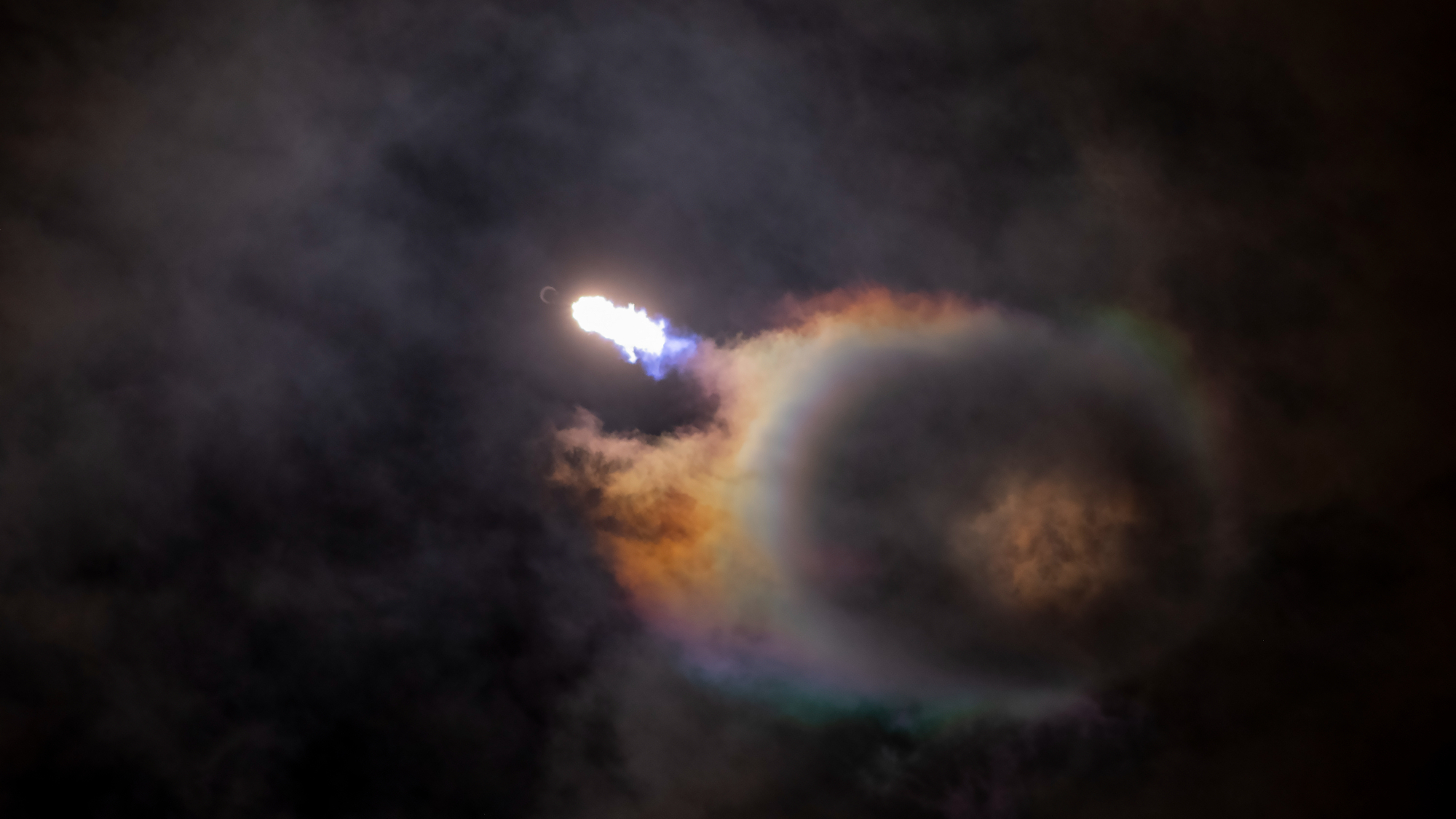SpaceX rocket double play! Falcon 9 soars over Falcon Heavy in gorgeous launch video, photo
Stunning launch footage shows one SpaceX rocket soaring into space above its brawny, ground-bound cousin.
The photo and video, which the company posted to X (formerly Twitter) on Friday (July 28), show a Falcon 9 rocket carving an orange arc into the sky above a Falcon Heavy, which is sitting on a nearby launch pad.
The action took place just after midnight Eastern time on Friday, when the Falcon 9 lifted off from Florida's Cape Canaveral Space Force Station with 22 of SpaceX's Starlink broadband satellites on board. The Heavy was just a few miles away, on Pad 39A at NASA's Kennedy Space Center.
Related: 10 weird things about SpaceX's Starlink internet satellites
The Falcon Heavy was supposed to be aloft at that time, too. SpaceX aimed to launch the Falcon 9 and the Heavy late Thursday night (July 27) just 44 minutes apart, which would have set a new record for the shortest time between liftoffs from the U.S. East Coast. (The current mark is 97 minutes, set in 1966.)
But SpaceX called the Heavy launch off to allow more time to perform vehicle checkouts. The big rocket is now scheduled to lift off Friday night, during a 99-minute window that opens at 11:04 p.m. EDT (0304 GMT on July 29). You can watch it live here at Space.com when the time comes.
The Heavy launch will still be record-setting, by the way: It will loft Jupiter 3, the largest commercial communications satellite ever built.
Breaking space news, the latest updates on rocket launches, skywatching events and more!
SpaceX ended up pushing the Falcon 9 launch further back Thursday night — all the way into Friday morning, in fact. The rocket lifted off at 12:01 a.m. EDT (0401 GMT), carrying yet more satellites for SpaceX's huge and ever-growing Starlink constellation.
SpaceX posted a few other photos of the liftoff — the company's 50th of 2023 already — on Friday as well. Those shots don't feature the Falcon Heavy, but they're gorgeous nonetheless.
For example, two of them show the Falcon 9 barreling through a vapor vortex of its own creation.
Another is a more standard beauty shot of the rocket rising off the pad, the flames from its nine first-stage Merlin engines lighting up its billowing exhaust plume and the four lightning towers surrounding the launch pad.
The Falcon 9 and Falcon Heavy are SpaceX's only operational rockets at the moment. But the company is developing a third vehicle as well — Starship, the biggest and most powerful launch vehicle ever built.
Starship has launched once to date in its fully stacked configuration, on an April 20 test flight that aimed to send the vehicle's upper stage part of the way around Earth. Starship checked many boxes on the flight, getting a maximum of 24 miles (39 kilometers) above its South Texas launch site. But it suffered several problems, and SpaceX sent a self-destruct command, destroying the vehicle high above the Gulf of Mexico.
Editor's note: This story was updated at 3:30 p.m. EDT on July 28 to include video of the Falcon 9 launch with the Falcon Heavy on the pad in the foreground.

Michael Wall is a Senior Space Writer with Space.com and joined the team in 2010. He primarily covers exoplanets, spaceflight and military space, but has been known to dabble in the space art beat. His book about the search for alien life, "Out There," was published on Nov. 13, 2018. Before becoming a science writer, Michael worked as a herpetologist and wildlife biologist. He has a Ph.D. in evolutionary biology from the University of Sydney, Australia, a bachelor's degree from the University of Arizona, and a graduate certificate in science writing from the University of California, Santa Cruz. To find out what his latest project is, you can follow Michael on Twitter.




